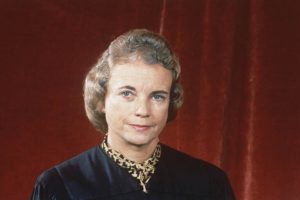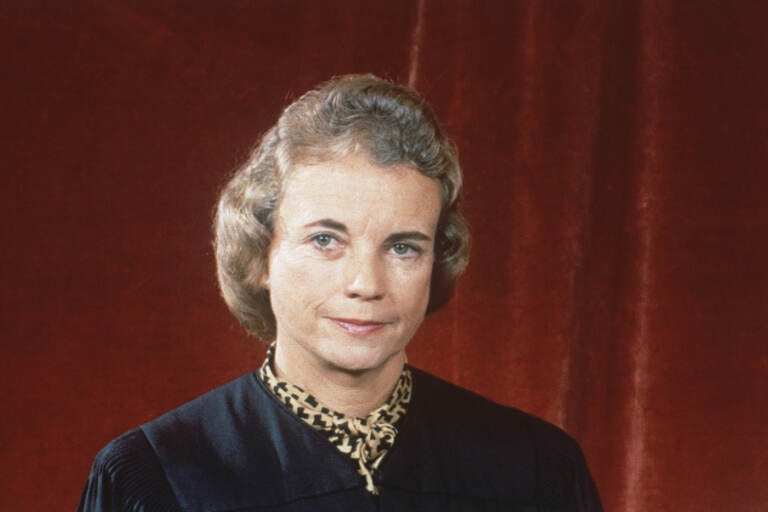Sandra Day O’Connor was a trailblazer in every sense of the word. Born on March 26, 1930, in El Paso, Texas, she went on to become the first woman to serve on the United States Supreme Court. Her appointment in 1981 by President Ronald Reagan was a significant milestone in American history. O’Connor served on the Supreme Court for 24 years, retiring in 2006. She played a pivotal role in shaping the legal landscape of the United States, leaving a lasting impact on the country and inspiring generations of women to pursue careers in law and politics.

Early Life and Education of Sandra Day O’Connor:
Sandra Day O’Connor was born on March 26, 1930, in El Paso, Texas. She grew up on a cattle ranch near Duncan, Arizona, where she learned the value of hard work and the importance of education. O’Connor was a gifted student and graduated from Stanford University in 1950 with a degree in economics. She went on to attend Stanford Law School, where she was one of only four women in her class. Despite facing discrimination early on in her career, O’Connor finished third in her class and went on to have a successful career in law and politics.
Career in Law and Politics:
After graduating from law school, Sandra Day O’Connor struggled to find employment in the male-dominated legal profession. She eventually landed a job as a deputy county attorney in San Mateo, California, before moving back to Arizona to work in private practice. In 1965, she was appointed as assistant attorney general of Arizona, becoming the first woman to hold that position. O’Connor’s political career began in 1969 when she was elected to the Arizona State Senate. She served in the Senate for six years, including a term as majority leader. In 1975, she was appointed to the Maricopa County Superior Court, where she served until 1979.
Appointment to the Supreme Court:
In 1981, Sandra Day O’Connor received the surprise of her life when she was nominated to the United States Supreme Court by President Ronald Reagan. O’Connor was the first woman to be appointed to the Supreme Court and faced intense scrutiny during her confirmation hearings. Despite the controversy, she was confirmed by the Senate with a vote of 99-0. O’Connor served on the Supreme Court for 24 years, retiring in 2006. She was known for her centrist and pragmatic approach to the law and often cast the deciding vote in closely contested cases.
Legacy of Sandra Day O’Connor:
Sandra Day O’Connor’s legacy as the first female Supreme Court Justice is a significant one. She played a vital role in shaping the legal landscape of the United States, leaving a lasting impact on the country. O’Connor was a strong advocate for women’s rights and worked tirelessly to promote equality and justice for all Americans. She inspired generations of women to pursue careers in law and politics, breaking down barriers and shattering stereotypes along the way.
Honors and Awards Received by Sandra Day O’Connor:
Sandra Day O’Connor has received numerous honors and awards throughout her distinguished career. In 2009, she was awarded the Presidential Medal of Freedom, the highest civilian honor in the United States. O’Connor has also been awarded the Congressional Gold Medal, the American Bar Association Medal, and the Liberty Medal, among many others. Her impact on American law and politics has been recognized and celebrated by people across the country and around the world.
FAQs:
What did Sandra Day O’Connor accomplish?
Sandra Day O’Connor was the first woman to serve on the United States Supreme Court. She played a significant role in shaping the legal landscape of the country and was known for her centrist and pragmatic approach to the law.
How did Sandra Day O’Connor become a Supreme Court Justice?
Sandra Day O’Connor was appointed to the Supreme Court by President Ronald Reagan in 1981. She served on the court for 24 years, retiring in 2006.
What was Sandra Day O’Connor’s legacy?
Sandra Day O’Connor left a lasting impact on American law and politics. She was a strong advocate for women’s rights and inspired generations of women to pursue careers in law and politics.
Conclusion:
Sandra Day O’Connor was a true trailblazer who shattered barriers and made history. Her appointment to the Supreme Court was a groundbreaking achievement that opened the door for women to serve on the highest court in the land. O’Connor’s centrist and pragmatic approach to the law earned her respect and admiration from both sides of the political aisle. Her legacy as a champion for women’s rights
